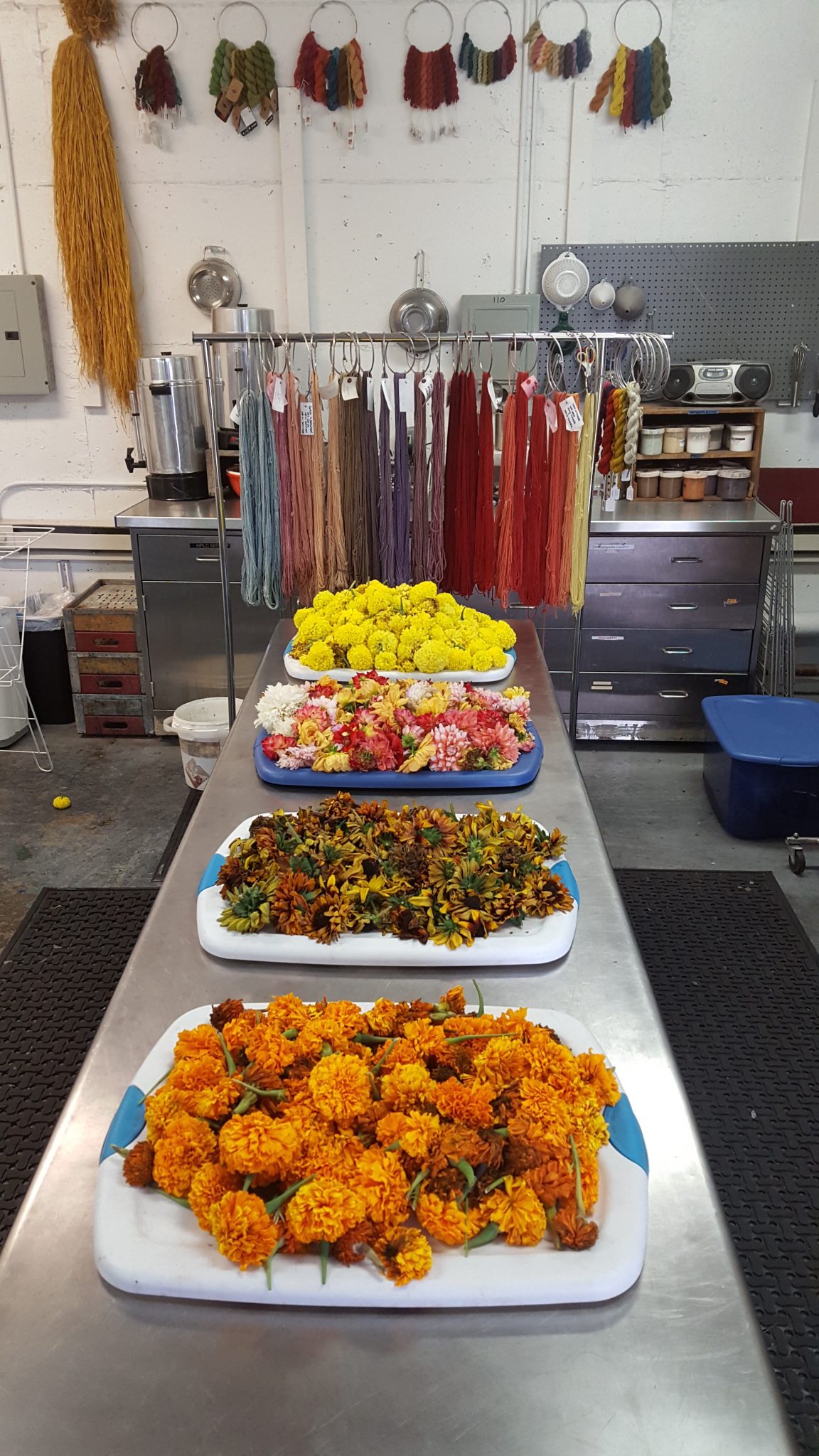This week: How to start a natural dye garden, where to train in natural dyeing and how to extract color from eucalyptus.
Each week, we are emailed with questions from our natural dye community asking simple and complex questions that we thought might be worth sharing. Here are a handful from this week answered by natural dyer in chief, Kathy Hattori, Founder of Botanical Colors:
I am reaching out to see if you have a good resource or perhaps any help in regards to starting a natural dye garden? I work at a Montessori school and I would like to start a garden with our middle school kids (we are starting a farm school) to teach them how to start a garden, tend, harvest the dyes, and then dye their fabric and yarns. I am currently on the google search journey trying to find some good information as well as resources for buying seeds, supplies, etc. to start, but I would appreciate any help.
All the basic considerations that go into a vegetable garden also apply when designing a dye garden. Are your dye plants annuals or perennials? Are they edible, inedible, considered poisonous and/or allowed in your area of the world? Much of the rural U.S. prohibits growing woad (Isatis tinctoria) for example, because it is a noxious weed that chokes out pastureland and some states actually pay a bounty to pull and destroy woad plants! A quick check of your local agriculture department will alert you to plants that should be avoided but they will also provide you with some great information if there are potential dye plants that are considered weeds and possibly worth of study.
Other questions include: what part of the plant is normally used in natural dyeing and can you grow enough of a quantity for your project? Location, sunlight, water and soil health are extremely important. Are there backyard plants that can be used to augment your dye sources that students could bring from home? Or food waste from a local processor, grower or restaurant? We are hoping to partner with a seed seller this year and offer garden seeds to grow your own. More details shortly!
Is there any place which conducts trainings in natural dye?
This is a total tooting your own horn response but…we offer one-on-one studio days in our fully equipped studio in Seattle. I focus on the topics and questions that are important to you and help move you forward in your understanding of natural dyes. As well, we often sponsor internationally acclaimed instructors with a week-long natural dye retreat and are planning our 2018 summer program now.
I have not been able to extract the intense hue from eucalyptus leafs when I eco print that I see in so many photos. I’m an avid and successful natural dyer for 4 years now, and the color from eucalyptus leaves has eluded me! They are not native to the Sierra Nevada mountains where I live, but I’ve procured leaves from Oregon, and all the corners of California. I’ve steamed them with and without iron for hours on scoured cotton and wool without a trace of color. I have produced a medium warm tan in a dye bath on wool yarn… but I’m eager to create this type of effect. Advice?
The world of eucalyptus color is wide, varied and sometimes elusive. Do keep in mind that the leaves are very durable and leathery (eg. water resistant) and may need some tenderizing in order to yield their color. The other thing to keep in mind is that many of the eucalyptus dyed pieces that I’ve seen have been bundled for weeks, not hours, so perhaps it takes a bit more time. A quick check online provides a number of resources for eco-printing, including some that are specific to eucalyptus.
Top image, results from Kathy’s dye gardening in Carnation, Washington

